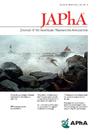Implementing a telemedicine-led heart failure medication regimen optimization clinic in medically underserved heart failure populations
IF 2.5
4区 医学
Q3 PHARMACOLOGY & PHARMACY
Journal of the American Pharmacists Association
Pub Date : 2025-01-01
DOI:10.1016/j.japh.2024.102309
引用次数: 0
Abstract
Background
Suboptimal guideline-directed medical therapy (GDMT) management for heart failure (HF) is a critical issue in rural communities. Most patients with HF in rural communities are treated in primary care settings. Multidisciplinary telemedicine-led HF medication optimization clinics were implemented to improve access to specialty care and address health disparities in HF care in rural Appalachian areas.
Objectives
The project aimed to evaluate the effect of a multidisciplinary telemedicine HF medication optimization clinic on the use of GDMT in cardiology and primary care services.
Methods
This pilot study was a multicenter prospective cohort study over a 6-month follow-up period. Patients aged > 18 years with HF with reduced ejection fraction or HF with mildly reduced ejection fraction were included. Telemedicine visits were conducted every 2 to 4 weeks. The primary outcome was the use of all 4 GDMT classes.
Results
The use of all 4 GDMT agents was numerically higher in HF cardiology service (n = 70) than the general cardiology cohort (n = 11) at baseline (46% vs. 9%), 1 month (55% vs. 18%), 3 months (58% vs. 18%), and 6 months (52% vs. 18%). The individual use of angiotensin receptor neprilysin inhibitor (ARNI), mineralocorticoid receptor antagonist (MRA), or sodium-glucose cotransporter 2 inhibitor (SGLT2I) was also numerically higher in HF cardiology service over 6 months. In the primary care service (n = 25), the use of all 4 GDMT agents was not significantly changed over 6 months. ARNI and beta-blocker use was numerically increased from the baseline to follow-up periods. MRA use was numerically decreased from baseline to follow-up periods. SGLT2I use was not significantly changed.
Conclusion
The multidisciplinary telemedicine approach was effective in the HF service group for GDMT optimization. However, further academic detailing for primary care and general cardiology services is needed, focusing on the initiation and persistence of MRA and SGLT2I and dose titration of GDMT agents.
在医疗服务不足的心力衰竭人群中实施远程医疗主导的心力衰竭药物治疗方案优化诊所。
背景:心力衰竭(HF)的指导性医疗疗法(GDMT)管理不理想是农村社区的关键问题。农村社区的大多数心衰患者都在初级医疗机构接受治疗。为了改善阿巴拉契亚农村地区心力衰竭患者获得专科治疗的机会,并解决心力衰竭治疗中的健康差距问题,我们开展了多学科远程医疗主导的心力衰竭药物优化诊所:该项目旨在评估多学科远程医疗高血压药物优化诊所对心脏病学和初级保健服务中使用 GDMT 的影响:这项试点研究是一项为期 6 个月的多中心前瞻性队列研究。研究对象包括年龄大于 18 岁的高频低氧血症(HFrEF)或高频低氧血症(HFmrEF)患者。远程医疗访问每 2 至 4 周进行一次。主要结果是使用了所有四类 GDMT:结果:在基线(46 对 9%)、1 个月(55 对 18%)、3 个月(58 对 18%)和 6 个月(52 对 18%)时,高频心脏病学服务(70 人)与普通心脏病学队列(11 人)相比,使用所有四种 GDMT 的人数更多。在高频心脏病服务中,6 个月内单独使用血管紧张素受体肾利酶抑制剂(ARNI)、矿物质皮质激素受体拮抗剂(MRA)或钠-葡萄糖共转运体-2 抑制剂(SGLT 2 I)的人数也更多。在初级保健服务中(25 人),所有四种 GDMT 药物的使用在 6 个月内没有明显变化。从基线到随访期间,ARNI 和 β-受体阻滞剂的使用在数量上有所增加。从基线到随访期间,MRA 的使用在数量上有所减少。SGLT 2 I 的使用没有明显变化:多学科远程医疗方法对高频服务组的 GDMT 优化很有效。然而,还需要对初级保健和普通心脏病学服务进行进一步的学术细化,重点关注 MRA 和 SGLT2I 的启动和持续使用,以及 GDMT 药物的剂量滴定。
本文章由计算机程序翻译,如有差异,请以英文原文为准。
求助全文
约1分钟内获得全文
求助全文
来源期刊
CiteScore
3.30
自引率
14.30%
发文量
336
审稿时长
46 days
期刊介绍:
The Journal of the American Pharmacists Association is the official peer-reviewed journal of the American Pharmacists Association (APhA), providing information on pharmaceutical care, drug therapy, diseases and other health issues, trends in pharmacy practice and therapeutics, informed opinion, and original research. JAPhA publishes original research, reviews, experiences, and opinion articles that link science to contemporary pharmacy practice to improve patient care.

 求助内容:
求助内容: 应助结果提醒方式:
应助结果提醒方式:


